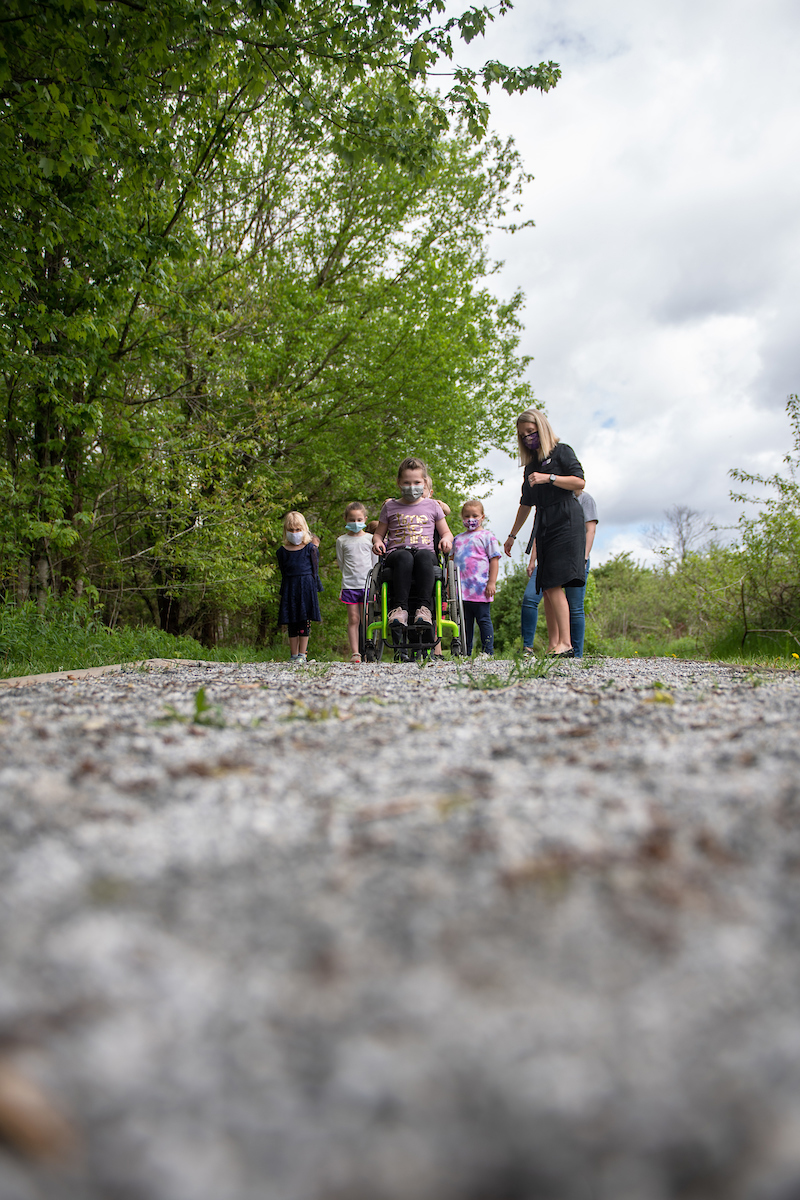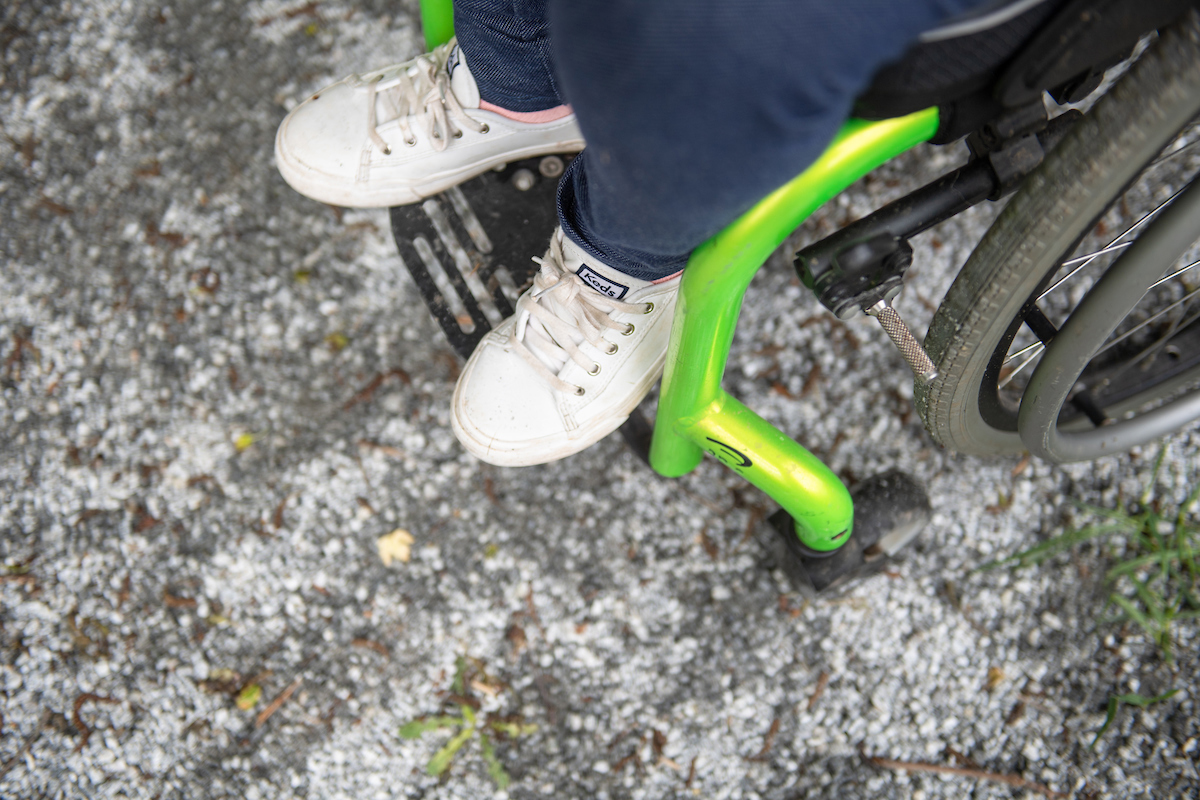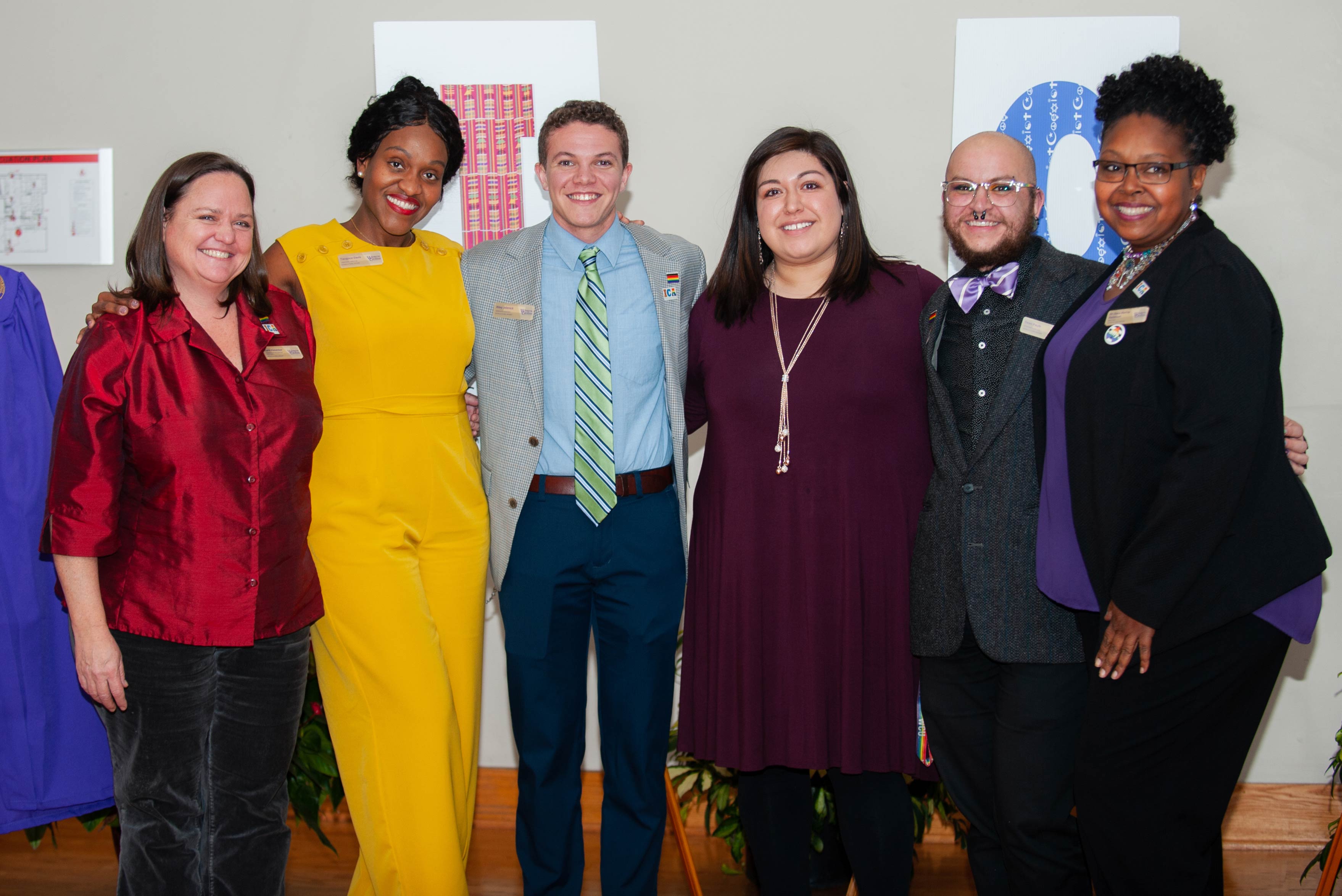











Kimberly Sanders
Leading kindergarten "engineers" to solve a real-world problem
In 2017 when Kimberly Sanders, a two-time Western Carolina University graduate and a South Macon Elementary School kindergarten teacher, wanted to increase the use of STEM activities in her classroom, she found just the help she needed in the College of Education and Applied Professions.


Working with Patricia Bricker, associate dean of CEAP and a professor in the School of Teaching and Learning, and Melissa Faetz, a STL instructor and former fellow elementary school teacher at South Macon, Sanders
was encouraged to think beyond building animal dens and marshmallow towers, typical
activities for teaching science, technology, engineering and math in elementary school,
and search instead for more “authentic” problems to solve.
Little did they know that collaboration would result four years later in a $12,000
North Carolina Schools Go Outside grant to resurface a new nature trail to make it
accessible for students with mobility issues and in turn help lead the completion
of a planned outdoor classroom space, a new shed to store the classroom’s supplies
and a new boardwalk to explore the bordering wetland.


“Dr. Bricker and Melissa challenged me to move toward a more realistic version of STEM. We discussed how curious young children are and how they have a natural way of finding solutions to problems,” said Sanders, who earned her undergraduate degree in elementary education in 2004 and will graduate this month with her master’s degree in STEM education. “Dr. Bricker suggested that we find a real problem at our school that the students would be invested in solving, an authentic problem that really affects the children and their everyday life at school.”

They did – discovering that the new 850-feet long nature trail, which had recently
been built to reach a new, planned outdoor classroom space, had an unstable surface.
The discovery got the students thinking. “If walking was difficult, how would our
friends with mobility issues be able to move down the trail to the outdoor classroom,”
said Sanders.
Faetz, who earned her bachelor and master’s degrees in elementary education from WCU, witnessed the problem firsthand when she tried
pushing her son, who has cerebral palsy, on the trail in his wheelchair. “We couldn’t
do it without me flipping it on its back wheels, so there was no way for him to get
a walker or his wheelchair down,” she said. “There’s a population of students at that
school who use wheelchairs and walkers and have balance issues, so we were worried
they wouldn’t be able to get to that space. That became the motivation behind the
whole thing.”

“One of the areas lacking has been STEM and engineering at the early elementary level,” Faetz said. "We wanted to explore what it looks like to do engineering design in kindergarten.”
The discovery triggered an age-appropriate engineering design process to plan, test
and use data to determine the best material for resurfacing the trail, work that Faetz
and Bricker were eager to implement in a kindergarten class. “One of the areas lacking
has been STEM and engineering at the early elementary level,” Faetz said. “There was
a lot available for third grade and above, but very little being done with the young
students, kindergarten, first grade. We wanted to explore what it looks like to do
engineering design in kindergarten.”
The first step was for the students to gather data to support the claim that the trail
was not wheelchair or walker friendly. Using sticky notes and smiley faces, the three
educators established a system for the students to indicate the level of difficulty
they had pushing a wheelchair on the trail: a regular smiley face meant the trail
was easy, a straight-line face meant the wheelchair could move a little, but it was
hard to push, and a frowny face meant the wheelchair couldn’t move at all. The students
then tallied the results and posted them in bar graphs they created. The frowny faces
overwhelmingly won.



Additionally, the educators supported the engineering activity with read-aloud books
about engineering, what engineers do and what their purpose is, which includes making
things easier, safe and more fun,” Faetz said. “That’s what we wanted to make this
path – easy and safe for everyone to walk down, so they can go have fun at the outdoor
classroom. That became our method.”
That was in 2017. The project ended for Sanders’ class because there was no money
to fund the trail’s resurfacing at the time, but the desire to create change and find
funds persisted. Fast forward to the 2020-2021 school year. Sanders gives her current
set of kindergarten students the approved new resurfacing materials to test: pebbles,
landscaping gravel and recycled granite (walking trail grit). Because the area is
a wetland, there are restrictions on what materials may be used.


“Based on the data they collected, graphed and analyzed, the students found the recycled
granite was the best surface. With adult support, the students wrote a claim about
the surface and supported the claim with evidence they had collected during the testing
of the surfaces,” Sanders said.
By mid-April 2021, the nature trail had been resurfaced. Sanders brought back her
original kindergarten class – now third graders – to see how the problem had been
solved. “This gave us an opportunity to show the original students and the current
students that when you follow an engineering design process your first plan might
not work. However, with perseverance and teamwork a solution was ultimately found
for this problem,” she said.

For Bricker, the project was important because of the work the kindergartners did and the collaboration between WCU and South Macon Elementary School, and because it shows how innovative teaching makes learning fun for everyone. “When I think about everything that we have to do as teachers, whether that’s elementary or university teachers, there are a lot of things we have to do that are hard, and this is hard work too, but it’s also inspiring work,” she said. “Where’s the joy in the classroom, where’s the passion, the enthusiasm, the energy? I just think that’s really important and it’s one of the many things I try to help my students see – there is space to do this. Maybe we can’t do this kind of stuff all the time, but we have to find time to do projects that are meaningful, applicable and motivating.”
About the Graduate Programs in Education
Program Overview
Location: Residential and Online
Part-Time or Full-Time
Degree: MAT or MAEd
Multiple Concentrations Available
App Deadlines: Jan. 1, May 1, Aug. 1

